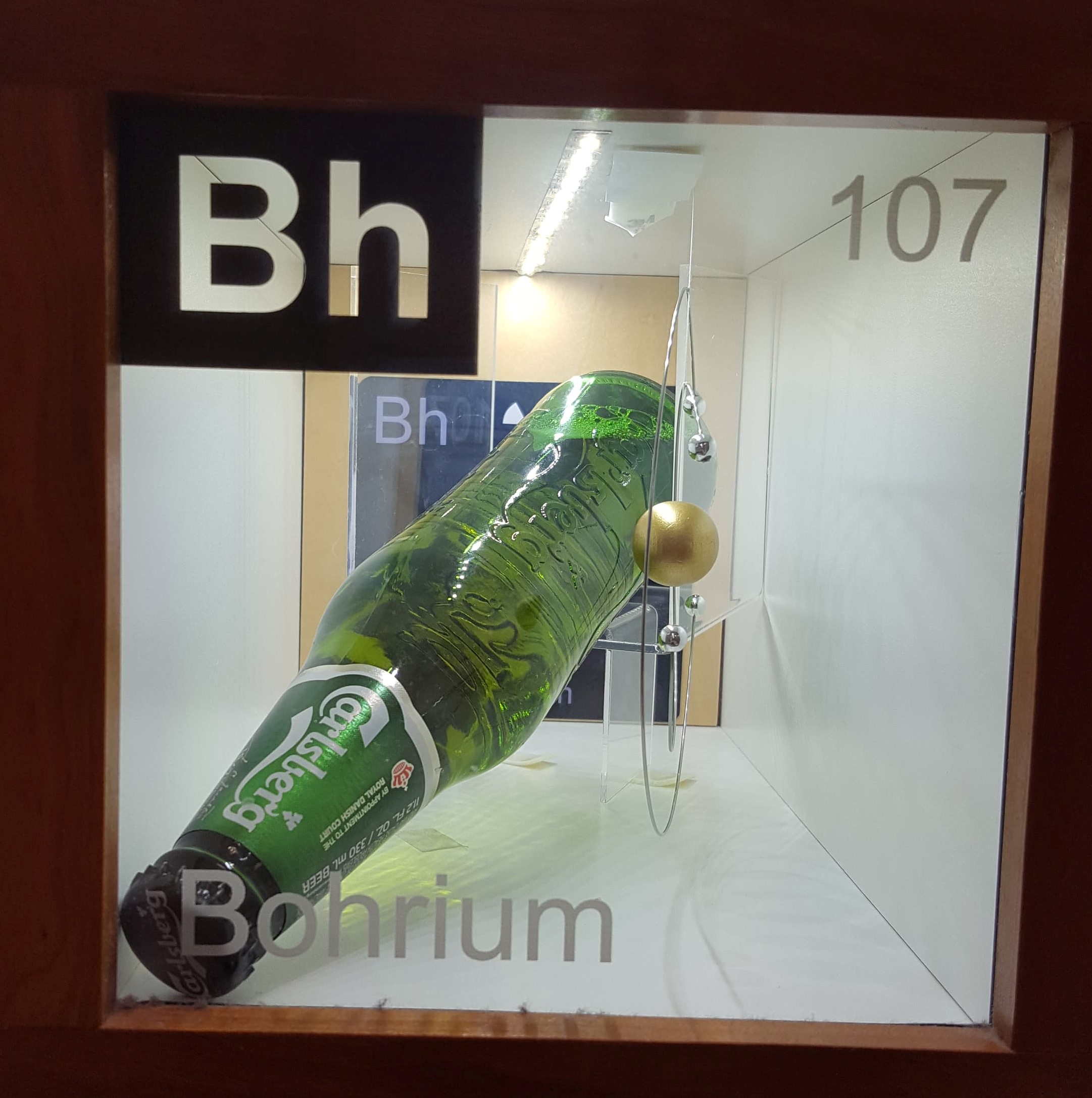Bohrium

Contributor: Cassandra Pittman
About the Display: Bohrium is a synthetic element named after the Danish physicist, Niels Bohr. In fact, the element was originally called nielsbohrium and had the symbol Ns but it was later shortened by the International Union of Pure Applied Chemistry (IUPAC) as no other element included a full name.
- Bohr model: explained below!
- Carlsberg beer: after Niels Bohr was awarded the Nobel Prize the Danish government rewarded him by purchasing him a house which included a direct tap-line to Carlsberg brewery-talk about motivation to win a Nobel Prize!
The namesake of Bohrium, Niels Bohr, was awarded the Nobel Prize in 1922 for his work on the structure of atoms. In the Bohr atomic model, electrons are depicted as having specific orbits around the nucleus. Bohr was the first person to recognize that electrons had separate orbits in an atom. His atomic model is perhaps the most recognizable, though other atomic models have since been accepted as more accurate depictions of the structure of an atom.
Bohrium was first synthesized as the isotope-261 at the Russian Joint Institute for Nuclear Research in 1975. The team, led by Yuri Oganessian, published the results of their findings in 1976.
In 1981, a team at the German nuclear research institute, the Geselleschaft für Schwerionenforschung (GSI), used the same method of bombarding bismuth with chromium and discovered isotope-262. The team, led by Peter Armbruster and Gottfried Münzenberg, is the team credited with the discovery, as the IUPAC did not feel the evidence presented by the Russian team was conclusive of bohrium production.
Bohrium is a synthetic element, meaning it is not a naturally-occurring element. Several isotopes of Bohrium have been discovered, the most stable of which is bohrium-270, with a half-life of just 61 seconds.
Bohrium is expected to have a +7 oxidation state and has shown to have properties similar to rhenium, which appears directly above bohrium on the periodic table.
There are no known uses outside of research for bohrium. Because of this, it is only used to study its physical properties and synthesize isotopes of other elements.
 About the Contributor: Cassandra Pittman works in the Instrumentation Center at the University of Toledo
as the SCOPE Program Manager and assists with filling the periodic table as well as
the webpage.
About the Contributor: Cassandra Pittman works in the Instrumentation Center at the University of Toledo
as the SCOPE Program Manager and assists with filling the periodic table as well as
the webpage.
Back to the Periodic Table
| |-Onward to the next element!> |
Symbol: Bh
Atomic Number: 107
Atomic Mass: 264 u
Electron Configuration: [Rn] 5f14 6d5 7s2
Year Discovered: 1981
Discovered By: Peter Armbruster, Gottfried Münzenber, and team


